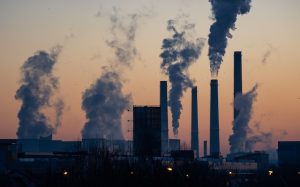From Air to Soil; How Pollution Claims 40% of Global Lives
Pollution’s Startling Impact on Global Health
In a world increasingly grappling with a multitude of challenges, pollution stands out as a pervasive, yet often underestimated, threat to our well-being. A recent study led by David Pimentel, a professor at Cornell University, highlights the grim reality: nearly 40 percent of global deaths can be attributed to pollution of our water, air, and soil. This environmental degradation, compounded by a booming global population, is sounding alarm bells within the medical community, as it correlates with a surge in various diseases.
Pollution: A Silent Killer
Pollution’s insidious effects may not always be visible, but they are alarmingly real. This research underscores that environmental degradation and rapid population growth are converging forces, impacting the health and nutrition of a staggering 3.7 billion individuals.
The Malnutrition Crisis
Malnutrition is one of the direct outcomes of pollution and environmental degradation. Shockingly, 57 percent of the world’s population currently grapples with malnutrition, compared to 20 percent in 1950. This dire situation directly leads to six million child deaths annually. Moreover, it makes millions more people susceptible to fatal diseases such as acute respiratory infections and malaria.
Urbanization Woes
The global shift towards urban living has given rise to overcrowded cities often plagued by inadequate sanitation. These conditions provide fertile ground for epidemics like measles and influenza to flourish. A growing proportion of the world’s population resides in such urban areas, further exacerbating these concerns.
Waterborne Diseases: A Looming Threat
Access to clean water remains a luxury for 1.2 billion people globally. This deficiency has dire consequences, with waterborne infections accounting for a staggering 80 percent of all infectious diseases. Increased water pollution also creates ideal breeding grounds for disease-carrying mosquitoes, leading to the deaths of 1.2 to 2.7 million people annually.
The Lethal Breath of Air Pollution
Air pollution is a global menace, claiming the lives of around three million people each year. In the United States alone, a shocking three million tons of toxic chemicals are released into the environment annually, contributing to various health issues, including cancer and birth defects.
Soil Contamination
Contaminated soil, laden with chemicals and pathogens, poses significant health risks. These hazards find their way into our bodies through direct contact or the consumption of contaminated food and water. As soil erosion escalates worldwide, it not only results in more airborne soil but also facilitates the spread of disease microbes and toxins.
Rising Microbial Resistance and Emerging Diseases
Microbes are becoming increasingly resistant to drugs, posing a significant threat to global health. Factors such as global warming and changes in biological diversity also influence the evolution of parasites and the spread of exotic diseases. Consequently, diseases like tuberculosis and influenza are resurfacing as major threats, while new ones like West Nile virus and Lyme disease have emerged.
The Call for Action
The findings of this study are a stark reminder that environmental pollution is not a distant concern but an imminent threat to our health and well-being. Comprehensive and equitable population policies, coupled with increased conservation efforts, are essential steps to mitigate this crisis. Relying on diseases and malnutrition to control population growth is a perilous strategy that diminishes the quality of life for everyone.
In a world where the interplay between humans and their environment is increasingly complex, addressing pollution and its consequences must be a priority. The health of our planet and its inhabitants is inextricably linked, and it’s high time we take meaningful action to safeguard both.








